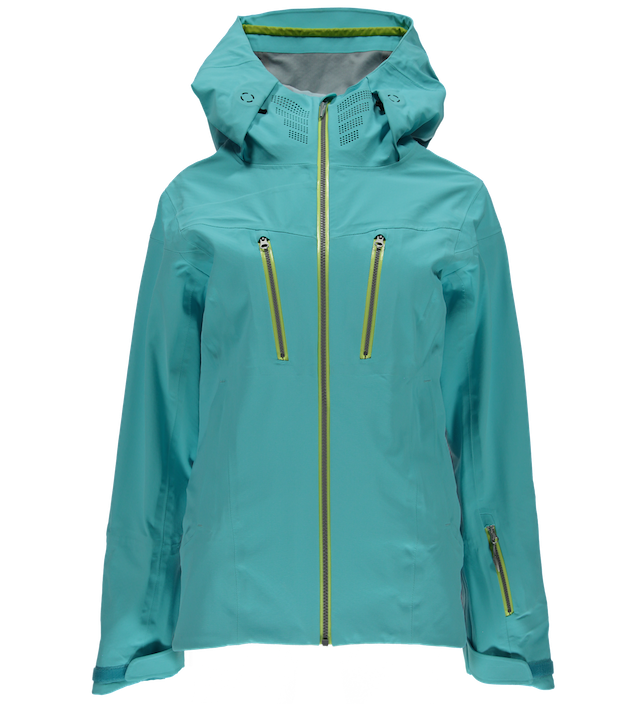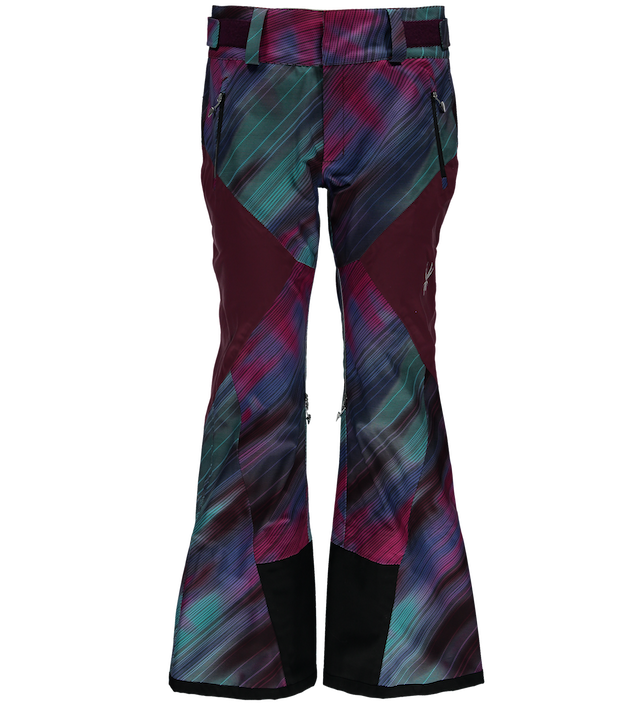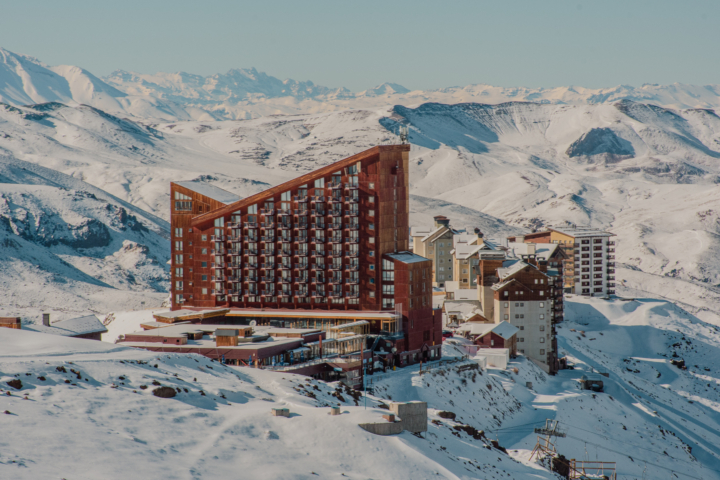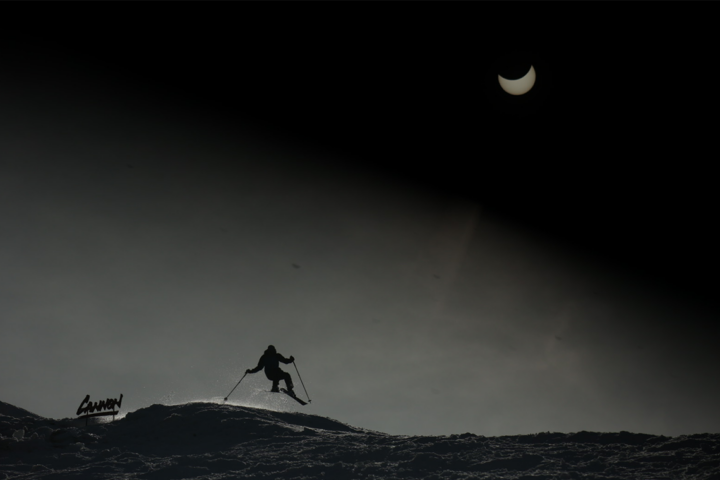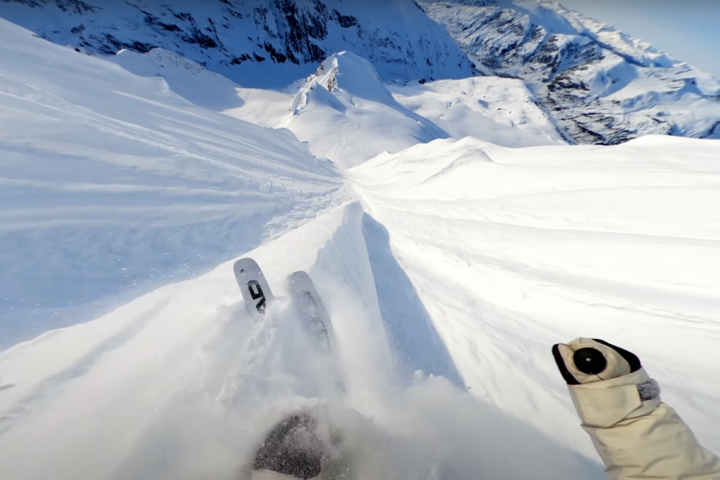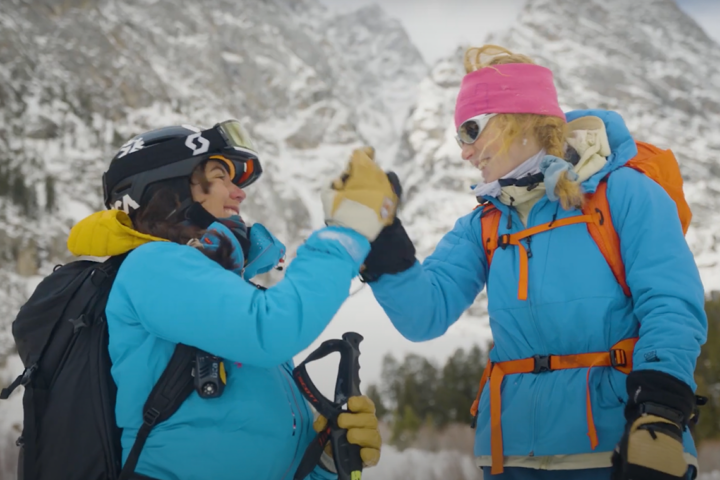

On December 9, 2013, Lake Tahoe native Amie Engerbretson made a classic powder turn in Utah’s Grizzly Gulch, a backcountry area just outside of Alta Ski Area. The slash triggered an avalanche that dragged her 100 feet downhill and into a terrain trap, where she was buried under two and a half feet of snow. She was dug out by skier and photographer Adam Clark—who was documenting Engerbretson’s skiing that day—and bystanders. She was wearing a beacon and deployed an airbag, but her partners didn’t have proper backcountry tools and the avalanche danger was rated considerable on the steep, north-facing rollover she was skiing. The incident was highly publicized and the group faced much criticism. But, Engerbretson’s personal account of the incident on her blog, titled “Blind Spot,” was well received for its honesty and accountability. Her humility resonated in statements like: “I knew that if I would have read the accident report about someone else I would have thought, ‘Wow, those guys were idiots.’” Engerbretson was shaken, but continued skiing.
A month later, she was skiing in-bounds at Crystal Mountain Resort in Washington after a massive storm delivered more than 60 inches of snow—closing the resort the day prior. She and her group were skiing cautiously all morning and moved to a treed area with some small airs at the top of the slope. Engerbretson noticed bomb holes on the face and ski-cut the top of her line before dropping in. But, when she landed her cliff drop, a pocket released, sending her head first down through the timber. She struggled in the heavy snow, but eventually inflated her airbag and was pinned against a tree 100 feet downslope—she’d torn her MCL and meniscus. The slide continued for approximately 1,000 vertical feet, carrying her ejected ski the entire way. Engerbretson was in disbelief. She knew the Utah incident was skier-induced, but this time, she was in-bounds, aware and taking proper precautions. Engerbretson realized she was forever changed as a skier.
“It was the compound effect of the two slides, within about a month of each other, and very early in my backcountry skiing career, that was really hard to overcome,” says Engerbretson.
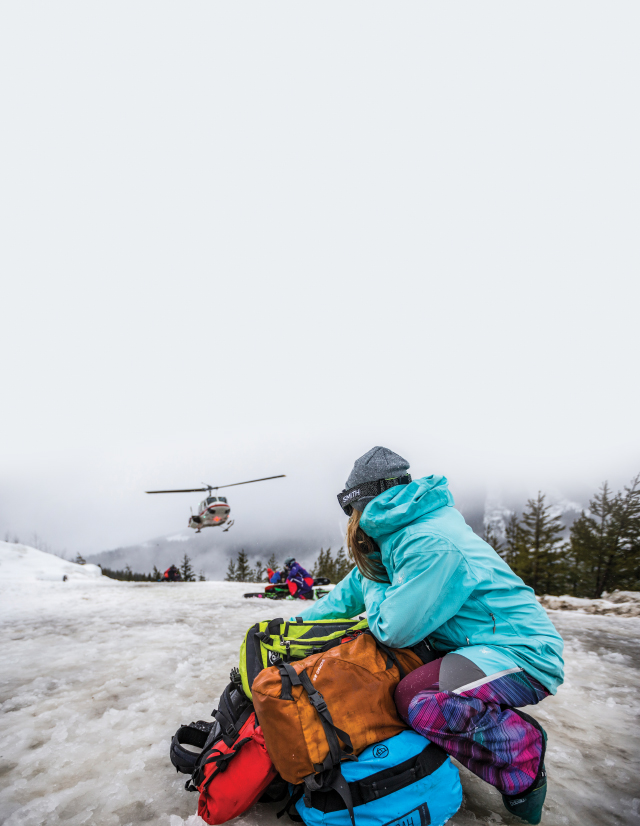
Photo: Jay Dash
Engerbretson continued backcountry skiing later that winter—having recovered from her knee injury—and even went heli-skiing for the first time. But, she constantly looked over her shoulder, expecting the worst. The feeling of sinking into a deep powder turn morphed from bliss into raw fear. She battled nightmares. All symptoms of post-traumatic stress disorder, from which many avalanche victims suffer; a 2002 study said 41 percent of buried victims experienced PTSD symptoms.
“The slides had become so huge in my mind that any hint of instability would set me off,” says Engerbretson. “I would start sweating and feeling nauseous.”
In the fall, Engerbretson realized she wasn’t healing and sought out a trauma therapist. Through Eye Movement Desensitization and Reprocessing (EMDR), the therapist worked to de-sensitize Engerbretson to her avalanche accidents and reprogram her subconscious in regards to the events. While triggering both sides of Engerbretson’s brain with a minor distraction, for example following the therapist’s fingers back and forth, they talked through the event in detail over and over and over.
“Eventually, I got to a point where I could go through all the [aspects] of the accidents and be okay,” she says. “It was hard to get there, but it gave me the space to really look at all the things that happened, trying to look at them without emotion. Through this process I was able to figure out what bothered me the most. What I found the most unnerving was the sense of a complete lack of control.”
A former competitive dancer and straight-A student (she finished high school with a 4.5 GPA and graduated college summa cum laude), Engerbretson had trouble accepting that fact. So, she focused on all the things that she did right and positive moments. She replaced the unpleasant imagery in her mind with the memory of snow shedding from her goggles, blue sky peeking through and Clark’s face smiling back.
“Not everyone gets the chance to test themselves in a dire situation,” says Engerbretson. “I did, and I passed. My body and mind did everything they knew how to, to stay alive. In some weird way that is reassuring.”
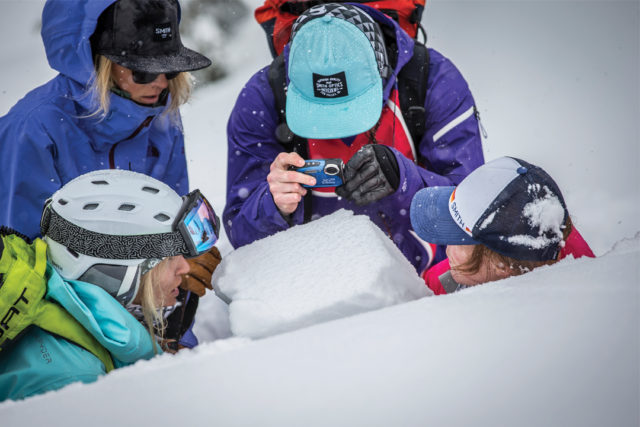
Photo: Jay Dash
In April of 2015, Engerbretson had the unfortunate opportunity to put her training to the test. She was on the trip of a lifetime, a film outing with Warren Miller Entertainment in Alaska. Standing atop Pyramid, an iconic peak in the Chugach, she dropped in on the biggest line of her life at the time—a 3,600- foot, 50-degree face. On her third turn, a small pocket pulled out below her. She dug her tip into the crown of the slide, inverted in the moving slab, got back on her edges and stopped immediately in what her guide called a “very athletic move.”
A down day after the incident on Pyramid allowed Engerbretson to talk about the experience with her group, her boyfriend and pro skier Todd Ligare and her dad, Jeff Engerbretson, a former professional skier. Again, she went back to what went right—her body and equipment did its job. A couple days later, she skied her favorite and most aggressive line of the trip.
“It was a good test of my training and ability to overcome that and get back on my feet,” says Engerbretson.
And that she has. At 28 years of age, her flowing blonde locks and enthusiastic smile can be seen in more published images than ever, including two magazine covers to date. Based in Utah, she’s worked methodically to create the ski career she’s always wanted. Engerbretson joined the Spyder team this summer as its only female backcountry skier and the female lead for the women’s Whyte Spyder outerwear line.
“Amie has a lot of skills as a skier, but what impressed us was her desire to never be complacent,” says Maddie Baker, Engerbretson’s team manager at Spyder. “She wants to push herself, try new things, ski harder lines, learn more about snow safety and ski in places few have visited. And her talents go far beyond her abilities as a skier. It’s not often you find a world-class skier who can rip lines in Alaska but also mountain bike, host TV shows, trail run, lead yoga classes, model and more.”
With a degree in media management from Columbia College, Engerbretson has produced many of the shoots she’s been a part of and she’s hosted events like Freeskiing World Tour stops, the Powder Awards and fashion events for magazines and television.
Growing up in Squaw Valley, Amie skied flawlessly—often in front of the lens for Squaw Valley marketing materials—but dance captured her heart. From age five until 22, Engerbretson trained and performed in ballet, jazz, hip hop and modern dance. She experienced stage fright, but excelled at performing.
“I would be nervous backstage and then as soon as I stepped on stage, it would vanish,” says Engerbretson. “The energy of the audience and the moment always helped.”
Perhaps it’s Engerbretson’s ability to channel her fear into focus, as opposed to fight, flight or freeze—the body’s typical response to a fear-induced adrenaline rush—that saved her on Pyramid in Alaska and help her to continue skiing in the backcountry.
Her father says no matter how scared Engerbretson might be, she pulls through when it matters.
When she skis steep chutes or other intimidating lines, she skis fluid, strong and confident; she doesn’t sit back at the first sign of nerves,” says Jeff, who is now a cameraman in Squaw Valley. “We climbed a via ferrata near Chamonix after she graduated college and she was shaking and crazy scared, but every time she’d adjust her carabiner, her hands would stop shaking. When she needs to focus, she can.”
Now that she spends half her time skiing in the backcountry in mountains all over the world—she’s even considering getting a snowmobile this season—managing that fear has become a full-time job.
“Usually I am still pretty scared—more scared than I should be, more scared than others in my group,” says Engerbretson. “In order to talk myself through what sometimes feels like paralyzing anxiety, and move through it, I’m basically having a constant conversation in my head when I am in the backcountry.”
Engerbretson’s thought process might go something like this:
This open snow field makes me nervous. Why? Well, it’s the same aspect we saw activity on this morning. There are no anchors or islands of safety. Hmm… those all seem like valid concerns. I am going to ask my group what they think of these issues. They tell me we are actually at a little higher elevation and slightly different aspect than I thought. We decide to be extra cautious and dig a few pits along the way and at the top. Okay, my group hears me. We find that the weak layer we discovered farther down is not intact up here and is not reacting. Our pit results are consistent. Conditions are better than I thought and there is a ridge to the skier’s left that looks better. Okay, but I’m still nervous; I still want to bail; I’m still scared. Do I want to go first? Yes. No. Yes. No… Okay, I’m scared because I can’t control Mother Nature. But I can control my decisions. I am making good ones. The group is talking and following protocol. I have some options terrain-wise and there is a good outrun. I can do this. It’s okay to be scared, but I’m going to be okay. So, yeah, I’ll go second.
Though many of the skiers she works with have more backcountry experience than she possesses, Engerbretson doesn’t worry about coming off as overly cautious. She usually prefaces her dialogue with her past experiences and what she’s learned.
“I really admire how she dealt with her avalanche experiences and how forward she was with talking about them,” says friend McKenna Peterson, who has skied with Engerbretson in Switzerland, Japan, British Columbia and Alaska. “Every time we go out, we talk a lot. Even about things we had gotten complacent about before. If we’re hiking up a ridge, we’ll stop, look across the slope and assess the terrain, even if we aren’t going to ski it.”
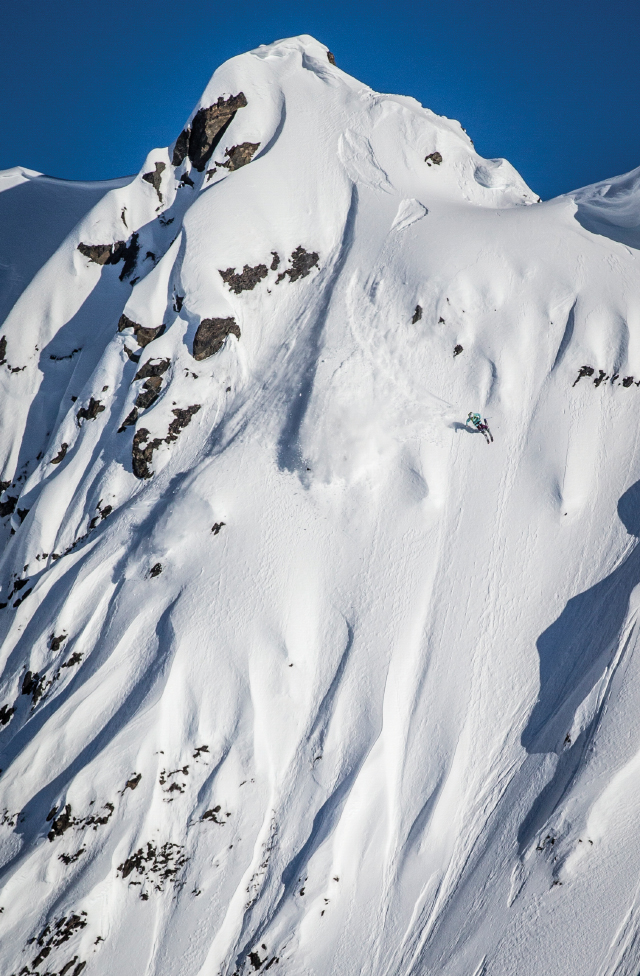
Photo: Jeff Engerbretson
Last spring, Engerbretson was on a hut trip in BC, faced with an unstable snowpack. Within 10 minutes of touring from the cabin, the group remotely triggered two slides, each with two-plus-foot crowns. “It took everything I had not to turn around and go back to the hut and sit there for a week,” says Engerbretson. Instead, she talked it out. She asked questions. She assessed the risk. She understood and organized her fear. She controlled what she could—her terrain choices—and found low-angle and low-consequence places to be productive (you’ll find footage from the trip in Engerbretson’s 2015-16 season highlight reel, titled FLAKES). Engerbretson fulfilled her dream of skiing powder and pillows in BC. The crew didn’t ski the raddest of lines, but, says Engerbretson, their goals shifted through the trip and they came away happy and safe.
“There was a lot of personal growth that happened in being able to not only stick it out and ski, but have a really, really good time,” she says. “Overcoming my trauma is a work in progress. I am not sure I will ever cure it or feel the way I used to in the backcountry. What I do aim to do is move through it, minimize the irrational fears and try my hardest to keep the joy alive.”
If Engerbretson’s published images are any indicator, though, the joy seems to be ever present.
As Spyder’s Baker says, “She loves this sport wholeheartedly. We have seen hundreds of pictures of Amie and are continually blown away that we can’t find one where she doesn’t have a huge smile on her face.”
Related gear:
Women’s Eiger Shell
This jacket is designed for ripping skiers who want outerwear that can keep up. The 3L stretch shell moves with you for easy mobility in the backcountry while its 20K/20K rating, full seam taping and waterproof zippers keep you dry on the up and down.
Women’s Turret Shell Pant
Pairing nicely with the Eiger jacket, this stretchy shell pant shares the same 20K/20K rating, full seam taping and waterproof zips. It also boasts articulated knee construction, thigh ventilation and a little flare to spice up your look.

